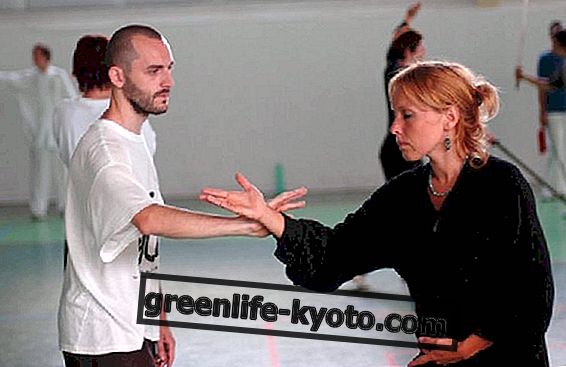
Meditation: asana, or posture
In the fundamental treatise Yoga Sutra by Patanjali, it is reported that in order to meditate effectively, it is essential to go through the stage called asana . In Sanskrit, the literal translation of asana is posture . In order to obtain a satisfying meditation the correct posture of our body is fundamental, as it allows a regular circulation of the subtle energies in all our psychophysical aggregate, facilitating relaxation and concentration and, at the same time, preventing our body from relaxing too much, making us fall asleep. There are several meditative positions, more or less easy to perform. Among the most famous ones there are surely that of the lotus ( Padmasana ), the pleasant posture ( Sukhasana ) and the diamond ( Vajrasana ).
For those who suffer from leg problems, even the sitting position, for example on a chair, can be fine. In any case, it is not always advisable to lie down on the ground, as the relaxation achieved can easily induce sleep. In general, before taking a position, some preliminary precautions should be taken. It is important to choose a clean and quiet place, considered or to be made comfortable, perhaps perfuming it with a stick of incense (sandalwood encourages meditation). Feet always naked, so it's important to remove shoes and socks. Comfort also resides in clothing, which should be wide, at least at the pelvis, and preferably linen or cotton. Blood circulation should not be hindered in any way, therefore via watches, necklaces and bracelets.
How to assume the correct meditation posture?
If we talk about posture and meditation, it goes without saying how fundamental our meditative position is in the position taken by our back . Straight and at the same time relaxed, with the chest open. This allows the energies of our body to flow as smoothly as possible, also counteracting the onset of drowsiness. The head is equally important. It must not be inclined too much or kept too upright, so as not to induce drowsiness or distraction. Usually, it is advisable to imagine a thread that from above, from the ceiling for example, pulls you up the neck, making you tilt your head slightly forward.
We come to the eyes . There are those who prefer to keep them closed and it is often synonymous with "beginner". With time, it is advisable to meditate, leaving the eyes slightly open, looking down. In fact, keeping the eyes open allows us to communicate to the brain our desire not to fall asleep and to keep the concentration alive. Tongue and teeth also play a minor role.
It is useful to let the palate touch the tip of the tongue, just below the upper arch of the teeth. This allows a lower flow of saliva and therefore instinctive swallowing, an aspect that usually disturbs the meditator.
As for the teeth, closed mouth and relaxed jaw, without clenching the teeth.
The arms and legs instead are, even aesthetically, the most important parts of the body for the meditative phase. During meditation, it is advisable to keep your hands on your lap with your palms facing upwards. The right hand goes over the left. The arms and shoulders must be relaxed, leaving a few centimeters between arms and trunk, to allow air to circulate and prevent drowsiness, even here. The ideal meditative posture of the legs is that of bent and crossed, almost creating a closed circuit, so as to favor the concentration and flow of energy.
A classic of meditation: the lotus position
Without doubt the most famous position; when one imagines a practitioner in meditation one thinks of the lotus. Cross your legs, making sure to place your right foot on your left thigh and your left foot on your right one ( complete lotus ). The knees touch the ground. Place the back of your left hand on your feet, a few inches below the navel. The back of the right hand goes to the palm of the left, with the two thumbs touching slightly. The lotus, however, does not represent a position accessible to most people, especially among Westerners.
In reality, making it is simple, but keeping it is difficult . Patanjali recommends, when one wants to meditate, to choose an easy and comfortable position, since every ailment or pain represents obstacles to an uninterrupted and fixed focus on our purpose. Yogis consider mastery in a posture when it can be maintained for over 3 hours and 48 minutes . This represents a period during which, as the fundamental yoga texts affirm, the effects become concerted, simultaneously in the three worlds - physical, astral and causal.













